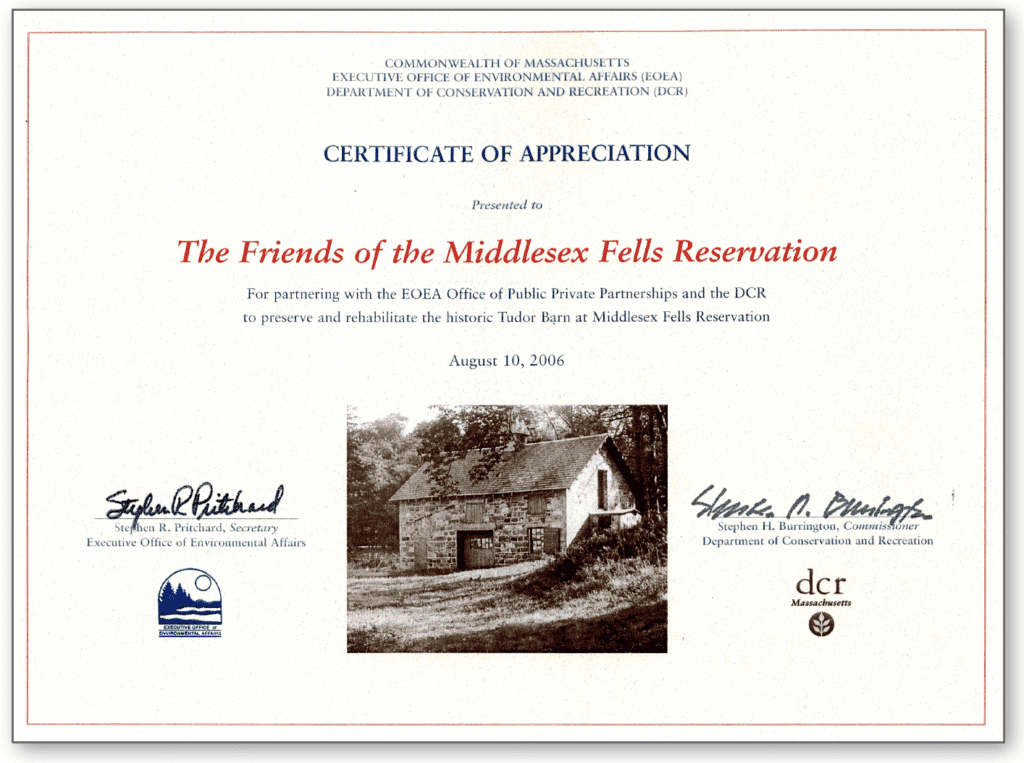The Tudor Barn needs your ideas! How should the historic 700 square foot structure be used? Do we need electricity there? Let us know how you think the public can enjoy this restored, unique stone building that once was a carriage house (never an ice house). Send your ideas to the friends at friends@fells.org.
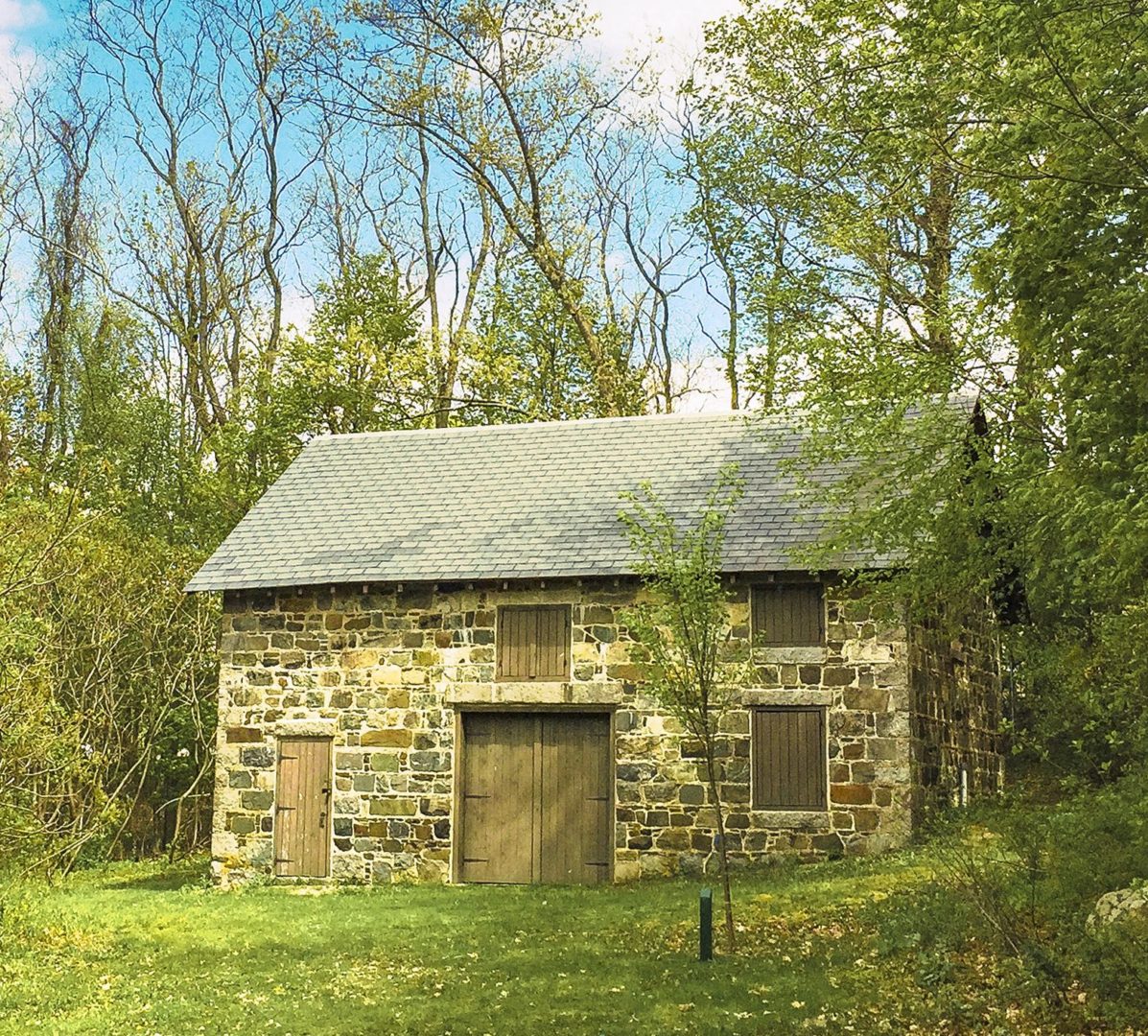
by Mike Ryan and Anita Brewer-Siljeholm
If you stroll south along Spot Pond from the Botume House on the broad woodland path, a mysterious little stone building will soon appear on your left. Facing the pond, with blank, boarded-up windows and locked wooden doors, no name or sign visible, the structure looks like it is awaiting new inhabitants. In some sense, it is.
The story of the Tudor Barn – which is not yet over – is a narrative of Boston’s search for drinking water, tragedy in a prominent Boston family, failed real estate speculation, a dose of good fortune – and above all, determined persistence of the Friends of the Fells to save a fascinating part of the Fells’ early history.
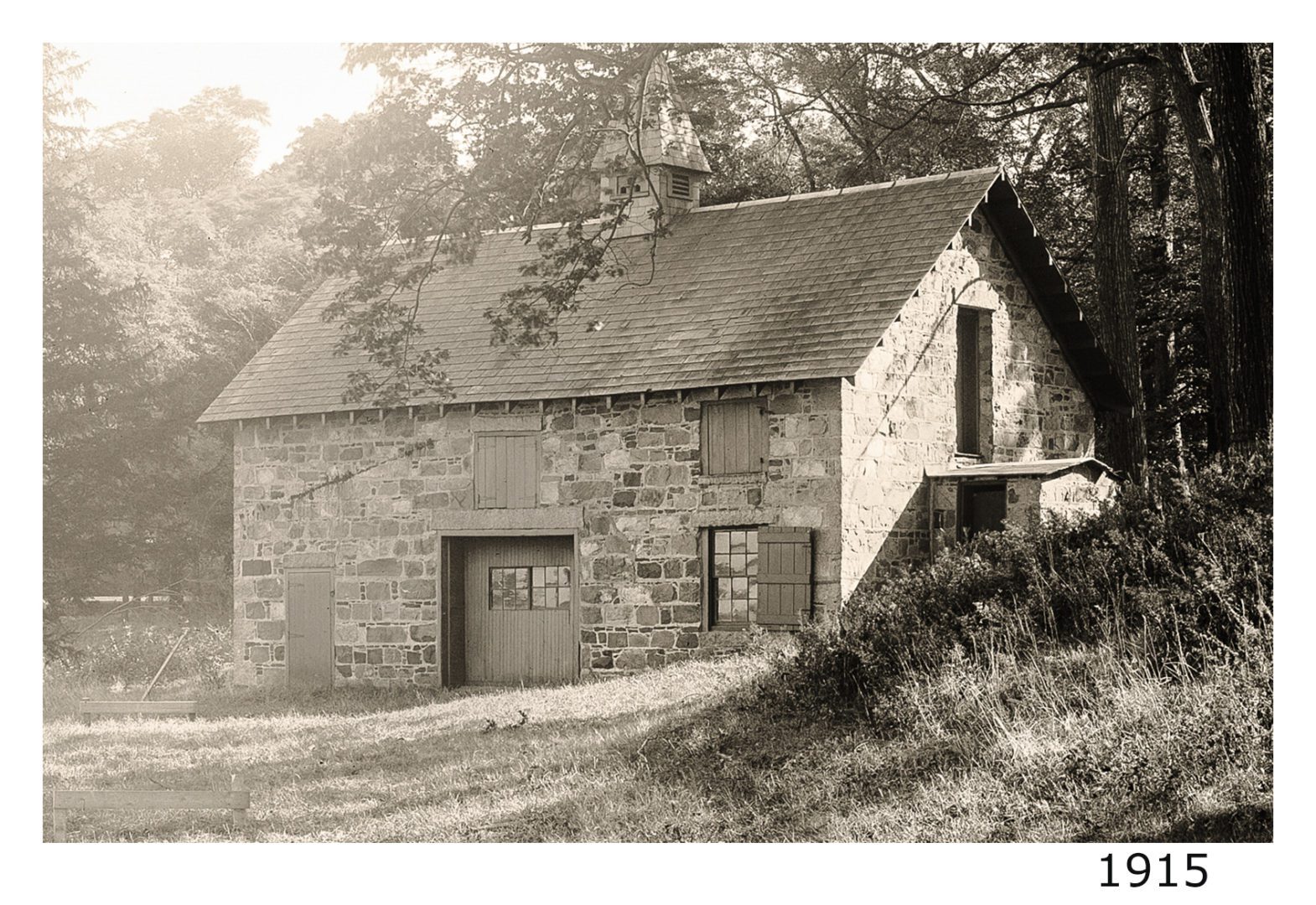
Built in the 1840’s as a carriage barn, and once attached to a nearby mansion now gone, the barn curiously survived the demolition of most nearby dwellings when they were razed around 1912 as part of securing the watershed to protect Spot Pond’s drinking water. Under one government agency after another, the beautifully hand chiseled stone walls held up — until they no longer could.
By the late 1990’s the roof had suffered a fire, and in 2003 a wall collapsed and the massive lintel over the door crashed down (see photo).
By then, the Friends of the Fells were several years into a campaign petitioning the state to repair the endangered building. Early in 1999, while the area was still under the control of the Metropolitan District Commission (MDC), the Massachusetts Water Resource Agency (MWRA) had allocated $88,000 to restore the Tudor Barn. The money was put in escrow when MWRA turned over the Spot Pond watershed to the MDC for recreation access.
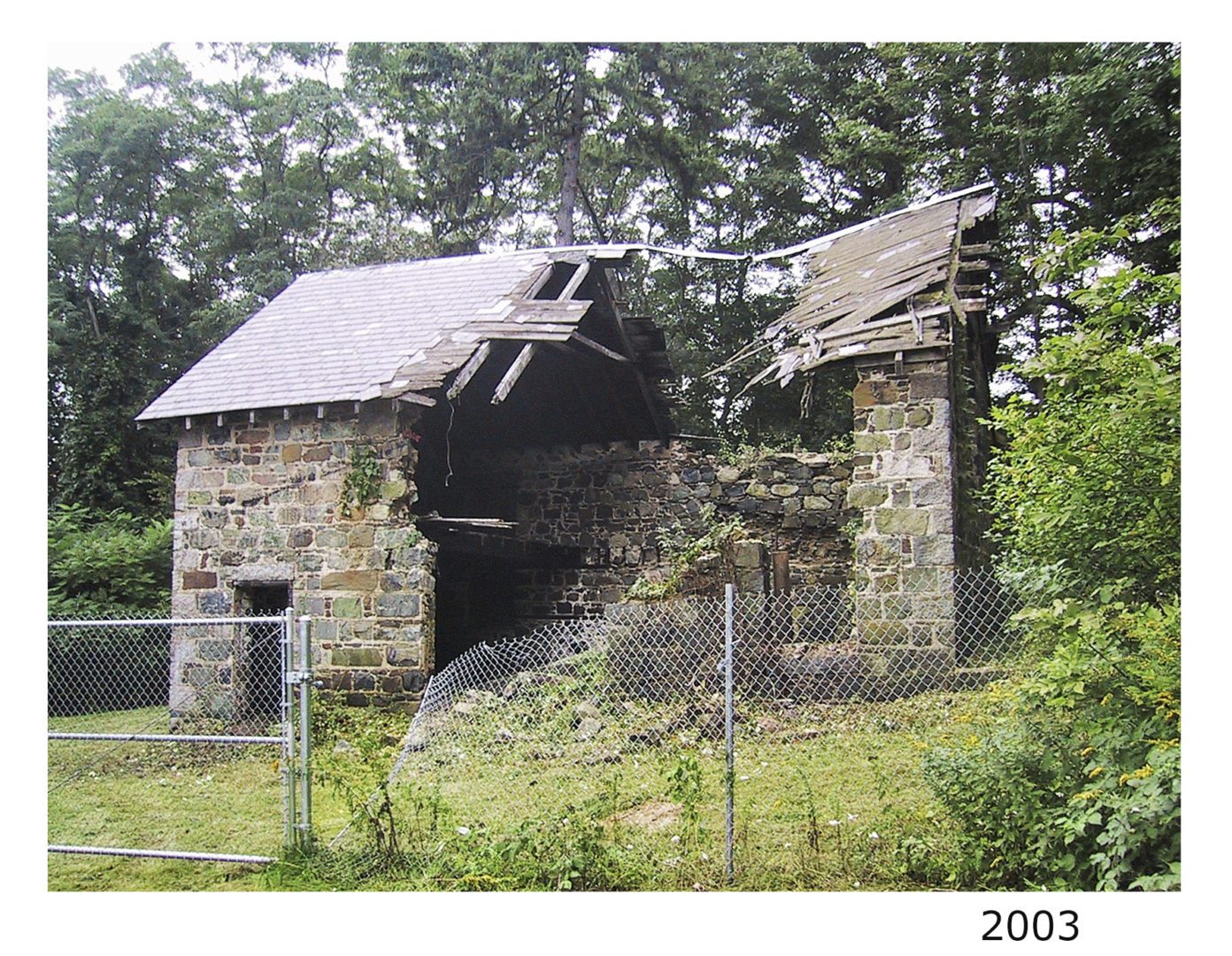
Encouraged by the funding, the Friends put constant pressure on the MDC to begin restoration work. At a meeting with the MDC commissioner in May 1999, the Friends of the Fells even challenged the MDC to get started by offering a $2,000 grant. This was declined.
By 2003 it seemed as if time had run out for the historic structure. No work had begun, the walls and roof began to fully collapse, and a chain link fence was erected to keep people away from danger. The cost of restoration had soared beyond what MWRA had put in escrow. In the nick of time that year, good fortune at last arrived; the newly created Department of Conservation and Recreation (DCR) became manager of the Fells, and the Friends gained a partner to move the work forward.
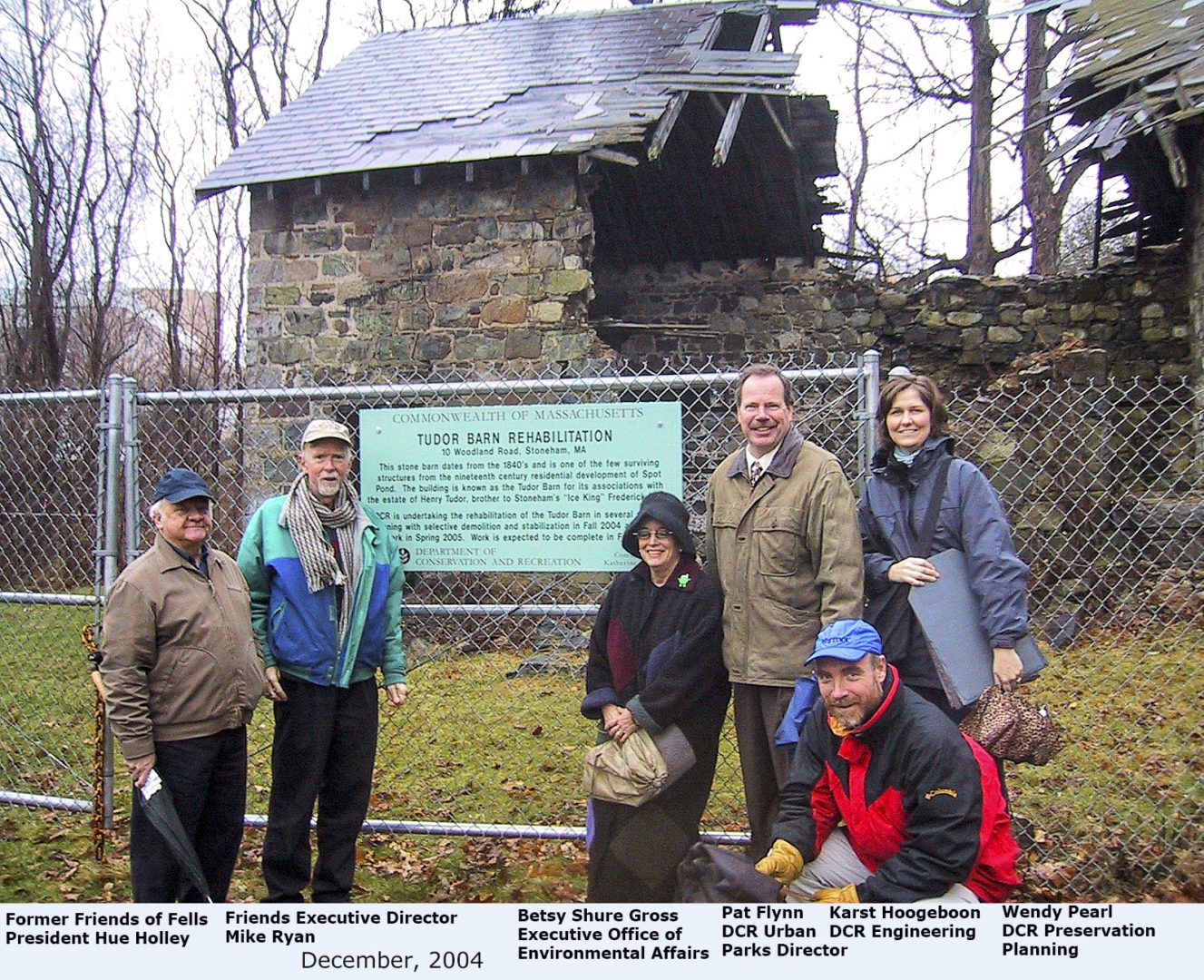
Continuing careful watch over the barn, the Board of Directors of the Friends raised $15,000 in a public fund drive which was matched by the state’s Environmental Office of Public Private Partnerships. With more state funds added, and the escrow amount, in December 2004 restoration began at long last with a groundbreaking ceremony at the barn attended by representatives from the Friends of the Fells, DCR and the state environmental affairs office.
Stone masons assigned to the project began to reconstruct the barn using recovered granite blocks littering the site. Chisel marks on the stones
revealed, “how the craftsmen 150 years ago squared them off to make these walls so flat,” according to skilled stonemason Michael Johnson, general contractor for the project. A concrete floor was poured to tie the walls together and provide a better footing for future public use.
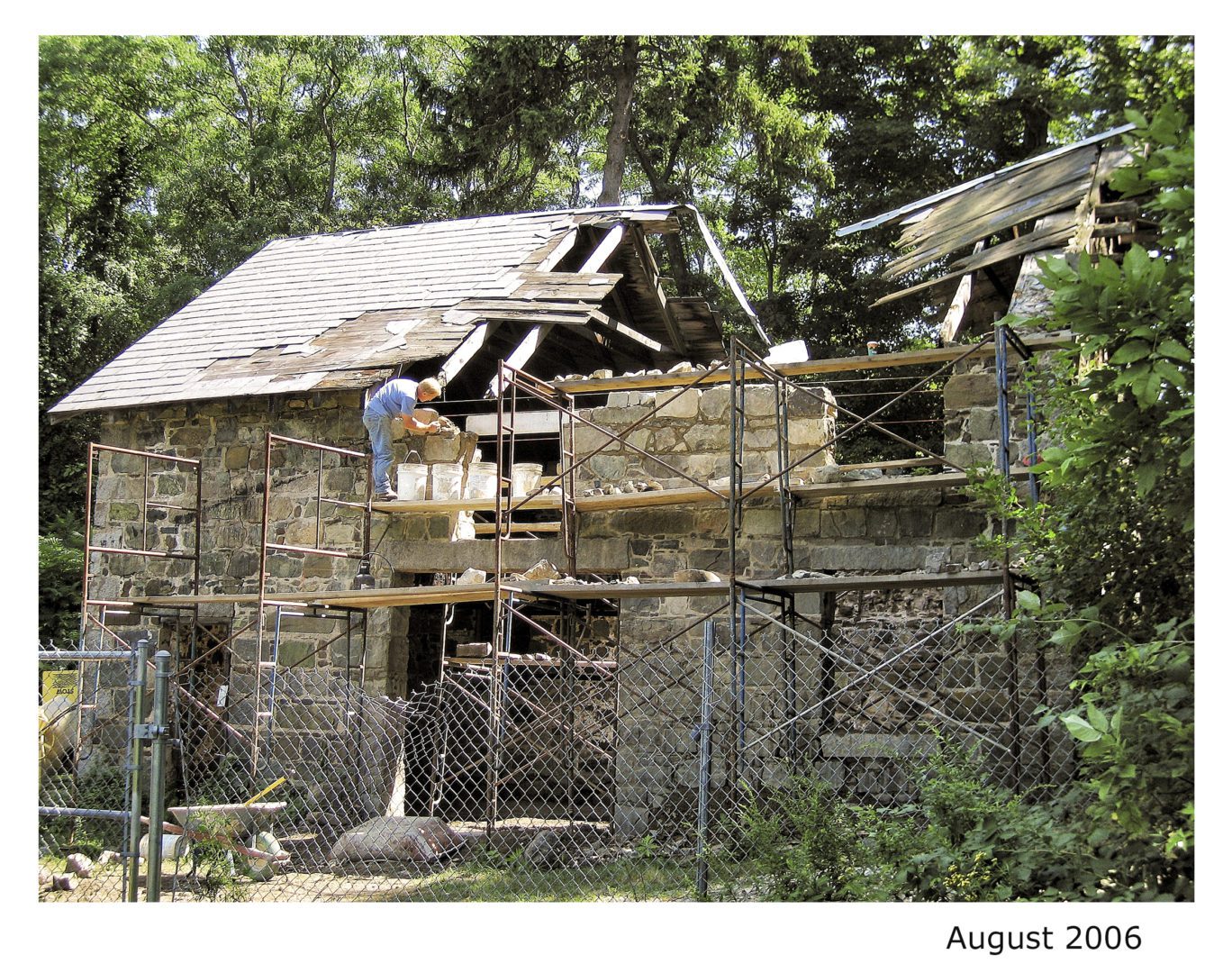
At last, on August 10, 2006 the DCR and the Friends of the Fells shared a ribbon cutting ceremony to mark the end of a remarkable collaborative effort. It is just one of several projects where the Friends have been an active steward partnering with both DCR and other groups. We do this to protect important but neglected natural and cultural features of the Fells. For the Tudor Barn, we hope that DCR will soon create a plaque explaining its historic status.
Next month: The Tudor Barn is named after the prominent Boston family who once owned the Spot Pond mansion to which it was connected. In our next installment we will write more about this family and their contribution of Virginia Wood, which was the first public land-trust donation in the world and proved instrumental in the formation of the Metropolitan Park System and the Fells Reservation.
